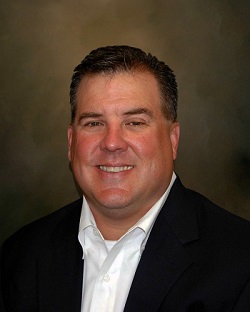Spotlight: Gold Cross Ambulance Celebrates 50 Years in Business
Gold Cross Ambulance Celebrates 50th Anniversary!
When Gene Moffitt founded Gold Cross Ambulance in March 1968, he didn’t know that 50 years later the company would be where it is today, the longest-running and largest private ambulance service in Utah.
At its core, Gold Cross is a family-run business. In fact, Gold Cross started out of the Moffitts’ home after he rented two Cadillac ambulances. In the beginning, Moffitt and two or three other employees responded to calls from the family home, where his wife, Julia, oversaw dispatch operations while caring for their young children. Julia has been central to the business since the beginning and has played an essential role in Gold Cross’s continued success.
Today Gold Cross employs over 500 people, operates around 140 ambulances, and responds to hundreds of 911 calls a day. Despite this growth, Gold Cross remains a family business with deep roots in the community—something that the Moffitts are very proud of.
Moffitt points to a couple of factors that have made Gold Cross’s journey a successful one. First, he’s always had a knack for being in the right places at the right time. But he believes that being honorable to the commitment he has made to provide high-quality healthcare to the people of Utah has been critical to his company’s ongoing success. “Success has not come to Gold Cross without much sacrifice over the years,” Moffitt says. “Growing and expanding has not been an easy process, but with dedication and a bit of luck, Gold Cross has been able to overcome the many trials and tribulations we’ve faced.”
Of course when you’ve been in business for 50 years, you’ll have seen many changes to your industry. Moffitt says one of the biggest changes he’s witnessed has been the buyouts of many ambulance services over the years, and that’s something he believes has been both good and bad for the industry. “When large companies buy out smaller ones,” he explains, “the connection of the ambulance service to the community that there was in the past is lost.” Moffitt notes that Gold Cross has never tried to go into another area unless it has been asked to. “Going into a new area to provide service is a delicate process,” he says. ”You must re-prove yourself to the community while being sensitive to the locals and to employees who may come over from the previous provider.” As a family-run business, nurturing the bond between Gold Cross and the communities it serves has always been very important to the Moffitt family.
Looking back on a more personal level, Moffitt has many memories he is proud of. The other day he came across a photo of one of the first babies that Gold Cross transported by ambulance in 1968 or 1969. Gold Cross worked closely with Dr. Larry Jung, a pioneering neonatologist, to help him provide life-saving care to children in Utah. “I’m in awe of how the medical community has really evolved over the last 50 years to give sick newborns and infants a better chance to live,” Moffitt says, smiling. “The baby in that photo would now be 50 years old!”
Gold Cross was also involved in the first heart transplant that took place in Utah. Gold Cross helped the hospital move the patient back and forth with the tremendous amount of equipment necessary for the procedure. The company also played a large role in the Salt Lake City Olympics back in 2002.
Moffitt also made many lifelong friendships because of his involvement with the AAA, including through his work as a past President of the association. He notes that the early AAA days were very important to his work at Gold Cross, giving his ambulance service access to resources and information that Gold Cross would not have had on its own. “The AAA helps foster a friendly relationship amongst providers,” he adds, “and members are very willing to share information about best practices and other experiences.”
Moffitt is working on bringing the company’s past and present together very visually, while giving a confident nod to the future. Gold Cross is refurbishing its remaining 1960 Cadillac ambulances and has also purchased a new ambulance to celebrate the 50th anniversary. When the brand-new ambulance is shown off alongside the 1960s ambulance, it will give a clear picture of where Gold Cross has come from and where the company is going.
And of course there will be numerous celebrations with staff and family, both of whom have been critical to Gold Cross’s success over the years.
One thing that has stayed exactly the same? Moffitt’s vision for Gold Cross—“to provide quality medical care and customer service to anyone, regardless of race, creed, color, religion, or the ability to pay.”
Please join the AAA in congratulating Gene, Julia, the Moffitt family, and Gold Cross Ambulance on 50 years of providing high-quality healthcare to the people of Utah.
Congratulations, and here’s to many more successful years!
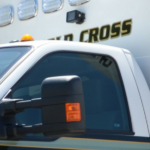
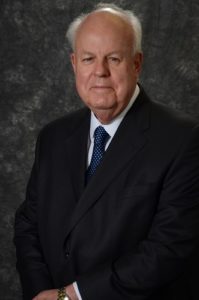

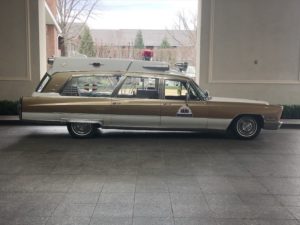
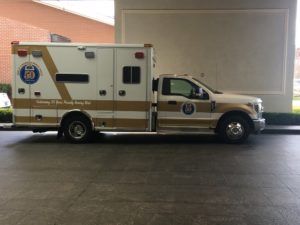
 Our first interview was with Marc Creswell, Acadian’s Air Med Operations Manager. Marc’s story is incredible for a number of reasons, and I won’t attempt to retell all of it here, but I will tell you Marc is the kind of guy that could have inspired the phrase, “when the going gets tough, the tough get going.” This is the guy you want in your foxhole. And to be honest, we could have completed our interview with Marc, packed up, and had more than enough material to tell a great story about Acadian and Katrina, but Acadian was just getting started.
Our first interview was with Marc Creswell, Acadian’s Air Med Operations Manager. Marc’s story is incredible for a number of reasons, and I won’t attempt to retell all of it here, but I will tell you Marc is the kind of guy that could have inspired the phrase, “when the going gets tough, the tough get going.” This is the guy you want in your foxhole. And to be honest, we could have completed our interview with Marc, packed up, and had more than enough material to tell a great story about Acadian and Katrina, but Acadian was just getting started.

